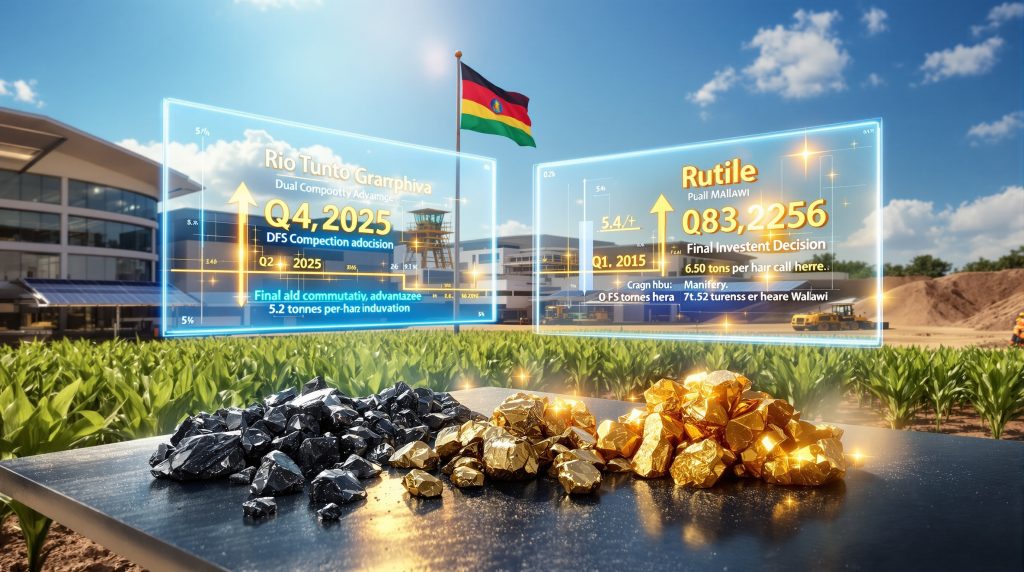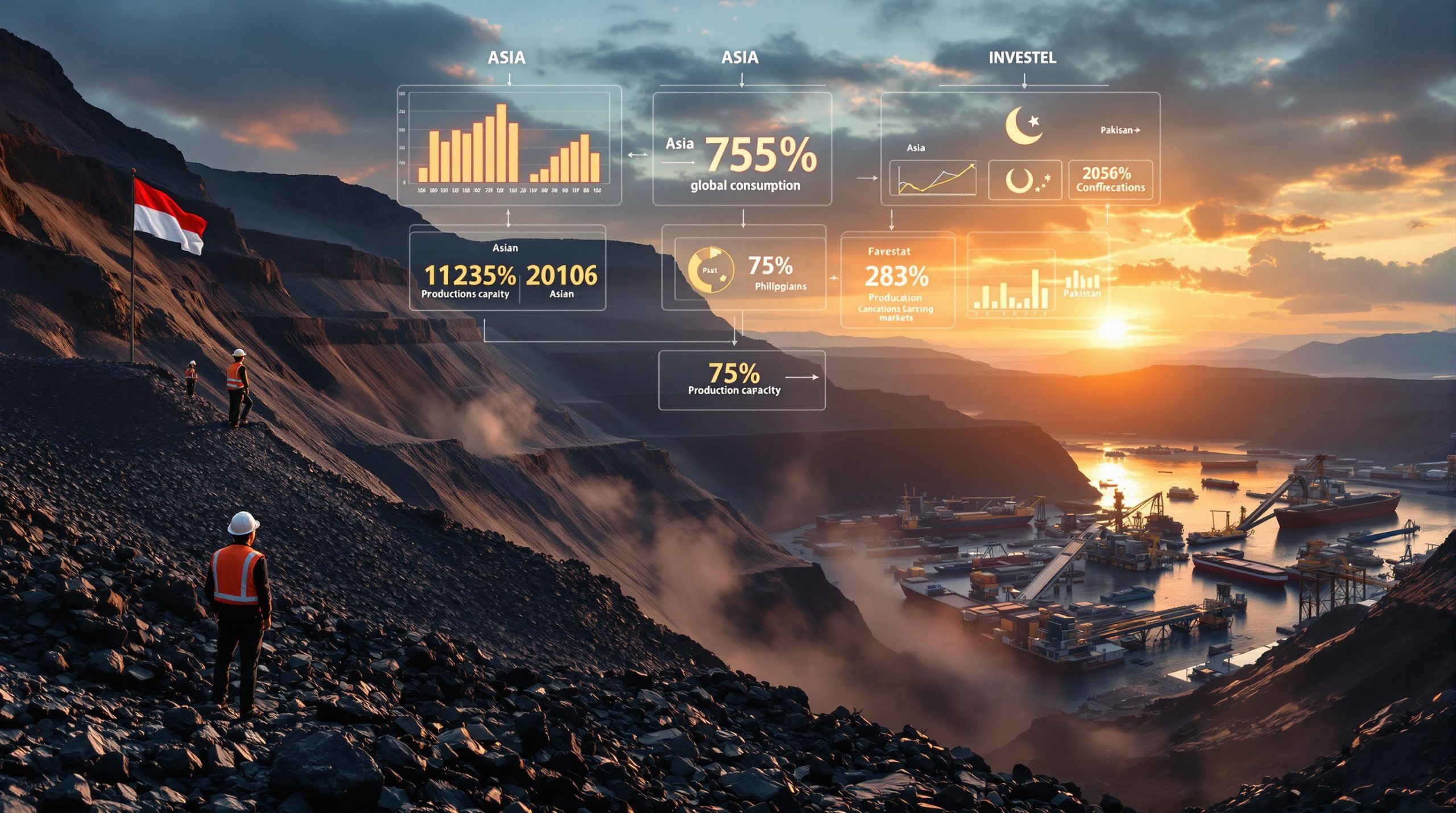Sovereign Metals has positioned itself at a critical juncture in mining industry evolution as the company advances toward completing the Kasiya project definitive feasibility study. This comprehensive analysis transforms preliminary engineering concepts into detailed specifications that satisfy the rigorous requirements of development finance institutions and commercial lenders.
The DFS phase establishes precise capital expenditure estimates, comprehensive risk assessments, and detailed operational parameters that enable final investment decisions. Unlike prefeasibility studies, which rely on preliminary assumptions and conceptual designs, the Kasiya project definitive feasibility study provides construction-ready technical specifications backed by extensive field validation.
Critical Components of Mining DFS Excellence
• Detailed geological modeling with grade control protocols
• Final engineering designs for processing infrastructure
• Comprehensive environmental impact assessments
• Financial modeling with sensitivity analysis across commodity price scenarios
• Infrastructure requirements and transportation logistics optimization
The institutional investment community increasingly differentiates between exploration-stage assets and development-ready projects with advanced engineering certainty. Projects completing DFS phases typically experience compressed risk premiums as technical uncertainty diminishes and financing pathways clarify.
Why the Kasiya Project DFS Timeline Matters for Investors
Sovereign Metals has established Q1 2026 as the target completion date for the Kasiya project definitive feasibility study, positioning the development for potential final investment decision by mid-2026. This timeline alignment coincides with favorable market dynamics including evolving critical minerals policy and substantial infrastructure investment commitments.
The strategic timing carries particular significance given recent developments in critical minerals markets. Preliminary anti-dumping duties of 93.5% announced by the U.S. Commerce Department in July 2025 on Chinese graphite imports create potential competitive advantages for non-Chinese suppliers, though final determinations remain subject to regulatory review.
DFS Completion Milestones and Investment Timeline
| Phase | Target Date | Strategic Significance |
|---|---|---|
| DFS Completion | Q1 2026 | Technical validation milestone |
| Final Investment Decision | Mid-2026 | Financing commitment window |
| Construction Commencement | 2026-2027 | Subject to successful financing |
| First Production | 2028-2029 | Based on typical development cycles |
Japan's commitment of US$7 billion to the Nacala Corridor infrastructure program provides additional strategic context for regional mining logistics. This multilateral institutional backing aligns with Western supply chain diversification objectives and establishes critical transportation infrastructure supporting future operations.
Furthermore, the convergence of technical milestone achievement, favorable policy developments, and infrastructure investment creates a unique positioning window for advanced-stage critical minerals projects. Institutional investors evaluating the sector increasingly focus on projects demonstrating clear pathways from technical validation to production commencement.
Technical Validation Through Comprehensive Geotechnical Analysis
Sovereign Metals completed over 400 individual geotechnical tests across all critical infrastructure locations through ARQ Geotech (Pty) Ltd, providing unprecedented subsurface characterization for the Kasiya project definitive feasibility study. These investigations confirm favorable ground conditions that align with regional geological expectations and support standardised engineering approaches.
The comprehensive testing programme examined four major infrastructure components: mining operations areas, process plant sites, tailings storage facilities, and water storage infrastructure. Results reveal consistent stratigraphy comprising surface topsoil, transported horizon, reworked residual gneiss, and deeply weathered soil profiles transitioning to soft rock at depth.
Geotechnical Investigation Results Summary
| Infrastructure Component | Subsurface Findings | Engineering Benefits |
|---|---|---|
| Mining Operations | Consistent soft saprolite | Enables simplified extraction |
| Process Plant Locations | Stable foundation materials | Reduces construction complexity |
| Tailings Storage Facility | Suitable containment geology | Lower engineering risk profile |
| Water Infrastructure | Favourable stratigraphy | Standardised design approach |
Ferricrete materials identified within the transported horizon demonstrate potential for reuse as engineered fill, creating additional cost optimisation opportunities. This material characterisation supports refined capital expenditure estimation and construction planning optimisation.
The Rio Tinto strategic partnership provided oversight through the Sovereign-Rio Tinto Technical Committee for these critical engineering investigations, adding validation credibility through Rio Tinto's global mining expertise. This technical oversight demonstrates institutional-grade review processes supporting DFS development.
Moreover, consistent subsurface conditions across infrastructure locations enable standardised foundation designs rather than site-specific engineering solutions. This standardisation approach potentially reduces both engineering complexity and construction timeline uncertainty.
Mining Method Innovation: Dry Processing Advantage
The Kasiya deposit occurs as blanket-style weathered saprolite mineralisation, eliminating conventional hard-rock mining requirements including drilling, blasting, crushing, and milling operations. This geological advantage enables dry mining techniques that significantly reduce operational complexity and energy consumption.
Weathered ore characteristics preserve natural graphite flake size while enabling simplified processing through basic scrubbing techniques. This processing advantage contrasts sharply with hard-rock graphite operations requiring energy-intensive comminution and complex beneficiation processes.
Operational Cost Structure Analysis
Based on the Optimised Prefeasibility Study, Kasiya targets US$241 per tonne incremental graphite production costs, positioning below China's weighted average production cost of US$257 per tonne. This cost advantage derives from the unique geological characteristics enabling simplified processing approaches.
Investment Note: Company management confirms no awareness of new information materially affecting this cost estimate, though final DFS validation remains in progress.
Dry Mining Competitive Advantages
• Energy Efficiency: Eliminates crushing and milling power requirements
• Water Conservation: Reduces processing water dependency
• Logistics Simplification: Streamlined equipment and infrastructure needs
• Product Quality: Maintains natural flake size characteristics
• Environmental Impact: Minimises processing-related disturbance
China currently controls approximately 75% of global graphite production and dominates anode material processing, creating strategic value for alternative supply sources. The dry processing approach positions Kasiya to deliver battery-grade graphite through simplified techniques that preserve premium product characteristics.
In addition, the weathered saprolite ore body represents a unique geological advantage compared to conventional hard-rock deposits. This natural processing benefit enables competitive cost structures while maintaining product quality specifications required for battery applications.
Rio Tinto Strategic Partnership and Technical Oversight
Rio Tinto's 19.9% strategic shareholding, acquired through a US$60 million investment in mid-2023, provides institutional validation and technical expertise through the Sovereign-Rio Tinto Technical Committee. This partnership structure delivers global mining expertise without operational control complications.
The Technical Committee includes Rio Tinto subject matter experts providing oversight for critical engineering decisions throughout DFS development. Committee responsibilities encompass review of geotechnical results, validation of mining methods, assessment of processing technologies, and oversight of infrastructure designs.
Strategic Partnership Value Creation
• Technical Validation: Rio Tinto expertise validates engineering assumptions
• Risk Mitigation: Global mining experience supports decision-making
• Institutional Credibility: Enhances project credibility for future financing
• Engineering Oversight: Committee review of critical technical workstreams
Rio Tinto's involvement remains focused on technical oversight rather than operational commitment. The company has not committed to construction financing or operational participation beyond existing strategic investment, maintaining flexibility for both parties while providing valuable technical input.
The Technical Committee provided specific oversight for geotechnical investigations completed in July 2025, demonstrating active engagement in critical engineering validation processes. This involvement supports refined technical assumptions and engineering approaches incorporated into the Kasiya project definitive feasibility study.
Consequently, strategic partnerships between major mining companies and development-stage projects increasingly focus on technical validation rather than immediate acquisition. This structure enables expertise sharing while maintaining development optionality for emerging critical minerals projects.
Market Context: Trade Policy and Supply Chain Dynamics
The U.S. Commerce Department's July 2025 announcement of 93.5% preliminary anti-dumping duties on Chinese graphite imports represents a significant shift in trade policy affecting global supply chain dynamics. These preliminary determinations, if finalised, would substantially increase costs for Chinese graphite in U.S. markets.
Tesla and Panasonic submitted opposing comments to these preliminary tariffs, highlighting industry concerns about alternative supply readiness. Tesla's submission specifically questioned whether U.S. graphite producers have demonstrated technical capability to produce commercial quantities at required quality specifications, as discussed by Crux Investor.
Trade Policy Impact Assessment
| Development | Kasiya Positioning | Market Implications |
|---|---|---|
| 93.5% Preliminary Tariffs | Potential pricing advantage | Reduces Chinese cost competitiveness |
| Final Determination Pending | Regulatory uncertainty continues | Requires ongoing monitoring |
| Industry Opposition | Implementation challenges | May affect final determination |
China's dominance in graphite production (~75% global market share) and anode material processing creates strategic vulnerabilities for battery manufacturers seeking supply chain diversification. Alternative suppliers outside Chinese control could benefit from policy shifts toward supply chain resilience.
Market Analysis: Final tariff determinations, potential exemptions, and industry responses remain uncertain pending Commerce Department review processes.
The preliminary nature of these trade measures creates both opportunity and uncertainty. Battery manufacturers require reliable supply chains with predictable pricing, making the transition from Chinese suppliers dependent on alternative source reliability and regulatory stability.
Furthermore, supply chain diversification mandates from Western governments and battery manufacturers increasingly emphasise critical minerals sourcing outside Chinese control. Projects capable of delivering battery-grade materials through established processing capabilities could benefit from this strategic realignment.
Environmental and Social Governance Excellence
Sovereign Metals achieved remarkable agricultural restoration success through rehabilitation trials at the 10-hectare pilot site, demonstrating superior post-mining land productivity compared to regional averages. Maize yields reached 5.2 tonnes per hectare, representing a five-fold improvement over the regional average of one tonne per hectare.
The systematic rehabilitation programme engaged 28 local farmers as partners, validating community-integrated restoration approaches for potential scaled implementation across the full project footprint. These results provide concrete demonstration of progressive rehabilitation effectiveness whilst supporting mine reclamation innovation.
Six-Step Rehabilitation Protocol
-
Land Preparation: Complete backfill and grading to original contours
-
Soil Enhancement: Lime, biochar, and fertiliser application using local materials
-
Mechanical Integration: Community equipment utilisation for soil preparation
-
Strategic Planting: Bamboo blocks with intercropped maize and legumes
-
Harvest Optimisation: Achieving superior yield performance metrics
-
Year-Round Productivity: Drip irrigation enabling winter farming programmes
These first-year rehabilitation results support project-specific closure provisioning, community benefit demonstration, and ESG positioning for development finance institution evaluation criteria. The agricultural productivity improvements provide tangible evidence of post-mining land enhancement rather than mere restoration.
ESG Performance Metrics Validation
• Agricultural Enhancement: 5x productivity improvement demonstration
• Community Partnership: 28 local farmers engaged as restoration partners
• Progressive Implementation: Rehabilitation strategy integrated into DFS planning
• Policy Alignment: Supports Malawi government industrialisation objectives
However, the rehabilitation success addresses potential concerns about mining impacts while demonstrating positive community outcomes. This ESG validation supports institutional investor mandates requiring demonstrated environmental stewardship and community benefit creation.
Regulatory Alignment and Policy Framework
President Peter Mutharika's September 2025 Executive Order prohibiting raw mineral exports specifically exempts processed materials, creating perfect alignment with Kasiya's planned in-country beneficiation strategy. All mineralisation extraction and processing would occur within Malawi to final product specifications.
Sovereign intends to process all rutile to greater than 95% titanium dioxide purity suitable for aerospace applications, while graphite processing targets 96% carbon content meeting battery and refractory manufacturer specifications. This value-addition approach satisfies government industrialisation policy requirements.
Regulatory Compliance Framework
| Product Stream | Processing Target | Export Compliance |
|---|---|---|
| Rutile Concentrate | >95% TiO2 purity | Aerospace-grade specifications |
| Graphite Concentrate | 96% carbon content | Battery/refractory applications |
| Value-Added Processing | In-country beneficiation | Government policy alignment |
The Executive Order provides regulatory clarity regarding export requirements while confirming Kasiya's operational alignment with government objectives. This policy exemption reduces specific regulatory uncertainty, though executive orders remain subject to future political review.
In addition, Malawi's focus on in-country value addition supports resource development while capturing additional economic benefits through processing activities. The Kasiya project definitive feasibility study incorporates full beneficiation capabilities meeting these requirements.
Regulatory Context: African jurisdictions periodically revise mining codes, requiring ongoing monitoring of policy developments affecting operational requirements.
Financial Position and Funding Runway Analysis
Sovereign Metals held A$42.9 million in cash and cash equivalents as of September 30, 2025, against quarterly operating expenditure of A$11.6 million. Management estimates this cash position provides approximately four quarters of funding runway to complete DFS development and maintain operations through mid-2026.
During the September 2025 quarter, A$6.9 million was allocated to feasibility studies and trial mining activities, demonstrating focused capital deployment toward technical de-risking milestones supporting DFS advancement.
Capital Allocation and Funding Analysis
| Financial Metric | Amount (A$M) | Strategic Purpose |
|---|---|---|
| Cash Position (Sept 30, 2025) | 42.9 | DFS completion funding |
| Quarterly Operating Expenditure | 11.6 | Ongoing operational requirements |
| Feasibility Study Investment | 6.9 | Technical validation advancement |
| Estimated Runway | 4 quarters | Through DFS completion |
The company's cash position targets DFS completion in Q1 2026 without immediate dilution requirements. However, construction financing would require substantial additional capital through development finance institutions, export credit agencies, or commercial project financing arrangements.
Post-DFS Financing Strategy
Management indicates the DFS incorporates workstreams designed to meet requirements of potential future lenders, including development finance institutions, export credit agencies, and offtake partners. This preparation positions the company for project financing discussions following technical validation completion.
• Development Finance Institutions: World Bank Group, IFC, MIGA engagement
• Export Credit Agencies: Government-backed financing support
• Commercial Lenders: Project finance arrangements
• Offtake Financing: Customer-backed funding structures
Moreover, the dual-commodity profile and strategic location may attract multilateral development bank support aligned with critical minerals supply chain objectives. However, financing success depends on DFS technical validation, commodity market conditions, and institutional investor appetite for African mining projects.
Infrastructure Development and Regional Context
Japan's backing of the US$7 billion Nacala Corridor investment programme provides strategic infrastructure context supporting regional mining logistics capabilities. This multilateral institutional investment aligns with Western supply chain diversification objectives and establishes critical transportation networks.
The Nacala Corridor development includes rail, port, and logistics infrastructure improvements supporting mineral exports from the broader region. These infrastructure investments reduce project-specific logistics risks while supporting multiple development projects across the corridor, as detailed by African Mining Market.
Infrastructure Advantage Assessment
• Transportation Access: Existing rail connectivity to deepwater ports
• Power Infrastructure: Planned grid connection to hydroelectric generation
• Renewable Integration: Solar energy combination for low-carbon operations
• Regional Development: Coordinated infrastructure investment programme
The infrastructure investment timeline coordination with project development schedules requires ongoing monitoring to ensure alignment. However, the multilateral backing suggests institutional commitment to regional development supporting multiple mining projects.
Sustainable Energy Integration Strategy
Kasiya's energy strategy combines hydroelectric grid power with solar generation to achieve industry-leading low carbon footprint operations. This renewable energy approach supports ESG credentials whilst reducing operational costs through sustainable power sources.
Consequently, the combination of favourable infrastructure development and renewable energy integration positions the project within ESG-compliant investment frameworks increasingly required by institutional investors and development finance institutions.
Competitive Positioning in Critical Minerals Markets
Kasiya's dual-commodity profile combining rutile and graphite production provides revenue diversification advantages compared to single-commodity development projects. This diversification reduces exposure to individual commodity price volatility while capturing value from two distinct industrial applications.
The project's competitive positioning derives from multiple factors including low-cost dry mining, favourable geological characteristics, strategic location outside Chinese supply chains, and technical validation through Rio Tinto partnership oversight.
Competitive Advantage Matrix
| Advantage Category | Kasiya Positioning | Market Significance |
|---|---|---|
| Cost Structure | Bottom-quartile production costs | Competitive across market cycles |
| Supply Chain | Non-Chinese alternative source | Strategic value for diversification |
| Technical Validation | Rio Tinto oversight | Institutional credibility |
| ESG Credentials | Demonstrated community benefits | DFI financing compatibility |
Global graphite resources exceed 800 million tonnes, representing hundreds of years of supply at current demand levels of approximately 1.6 million tonnes annually. This resource abundance creates ongoing pricing pressure, emphasising the importance of low-cost production capabilities for long-term viability.
Market Context Considerations
The graphite market faces structural challenges from resource abundance, though battery demand growth provides potential demand expansion. Projects achieving bottom-quartile cost positions maintain competitive advantages across commodity price cycles.
Rutile markets demonstrate more stable pricing dynamics with limited high-grade supply sources globally. The combination of rutile and graphite production creates revenue stability through commodity diversification whilst addressing distinct industrial applications.
Furthermore, China's dominance in graphite processing creates opportunities for alternative suppliers capable of delivering battery-grade materials outside Chinese control. Trade policy developments and supply chain diversification mandates could enhance strategic value for non-Chinese projects.
Investment Thesis: From Technical Study to Development Decision
The transition from prefeasibility to definitive feasibility represents a critical inflection point where preliminary concepts advance to bankable technical specifications meeting institutional investment requirements. For Sovereign Metals, the Kasiya project definitive feasibility study completion targets Q1 2026 as the technical validation milestone enabling financing discussions.
Institutional investors increasingly differentiate between exploration-stage assets and development-ready projects with comprehensive technical validation. DFS completion satisfies mandates requiring defined capital expenditure, net present value calculations, and comprehensive risk assessment frameworks whilst supporting proper drill results interpretation.
Investment Catalyst Framework
• Technical De-risking: Geotechnical validation reducing engineering uncertainty
• Cost Competitiveness: Bottom-quartile positioning supporting margin sustainability
• ESG Validation: Community benefit demonstration meeting institutional requirements
• Strategic Partnership: Rio Tinto involvement providing technical credibility
• Market Timing: Trade policy developments creating competitive advantages
The convergence of technical validation, strategic positioning, and favourable market dynamics creates potential for investment re-rating following DFS completion. Projects demonstrating clear pathways from technical study to production commencement command institutional attention in critical minerals sectors.
Risk Assessment and Mitigation Strategies
Construction execution risk remains following DFS completion, requiring successful project financing and operational implementation. Commodity price volatility affects project economics, though dual-commodity exposure provides some mitigation through revenue diversification.
Regulatory changes in African jurisdictions require ongoing monitoring, though current policy alignment supports operational planning. Competition from established Chinese producers continues despite potential trade policy advantages creating strategic positioning opportunities.
However, the investment thesis centres on technical validation enabling financing discussions while market conditions provide strategic value recognition for alternative supply chain sources outside Chinese control.
Frequently Asked Questions
When will the Kasiya project definitive feasibility study be completed?
Sovereign Metals targets Q1 2026 for DFS completion, with final investment decision discussions potentially beginning in mid-2026. Construction timing depends on successful financing arrangements and regulatory approvals following technical validation.
What role does Rio Tinto play in the DFS development process?
Rio Tinto maintains a 19.9% strategic shareholding and provides technical oversight through the Sovereign-Rio Tinto Technical Committee. This involvement focuses on engineering validation rather than operational commitment beyond existing investment.
How do U.S. tariffs on Chinese graphite affect Kasiya's competitive position?
Preliminary 93.5% anti-dumping duties announced in July 2025 could create pricing advantages for non-Chinese suppliers if finalised. However, these remain preliminary determinations subject to final Commerce Department review and industry challenges.
Does Sovereign have sufficient funding to complete the DFS and begin construction?
Current cash position of A$42.9 million provides estimated four-quarter runway to complete DFS by Q1 2026. Construction would require substantial additional capital through project financing arrangements with development finance institutions and commercial lenders.
How does Kasiya's environmental performance compare to other mining projects?
Rehabilitation trials achieved five-fold agricultural productivity improvements, demonstrating superior land restoration capabilities. Combined with renewable energy integration, the project targets industry-leading environmental performance metrics supporting institutional investment criteria.
What makes Kasiya's mining approach unique in the graphite sector?
Weathered saprolite ore enables dry mining without drilling, blasting, or crushing operations. This geological advantage reduces energy consumption whilst preserving natural flake size characteristics, creating cost and quality advantages over conventional hard-rock operations.
Need Market-Leading Intelligence on Emerging Opportunities?
Discovery Alert's proprietary Discovery IQ model instantly alerts subscribers to significant ASX mineral discoveries, transforming complex market data into actionable investment insights before broader market recognition occurs. Explore why historic mineral discoveries consistently generate substantial returns and begin your 30-day free trial to position yourself ahead of the market for the next breakthrough.




